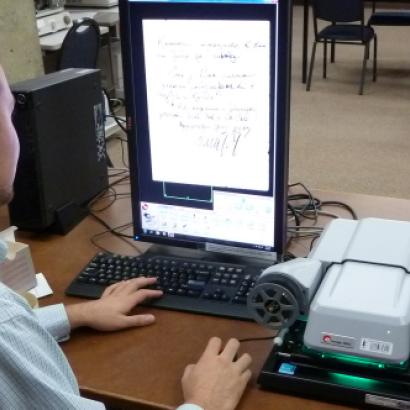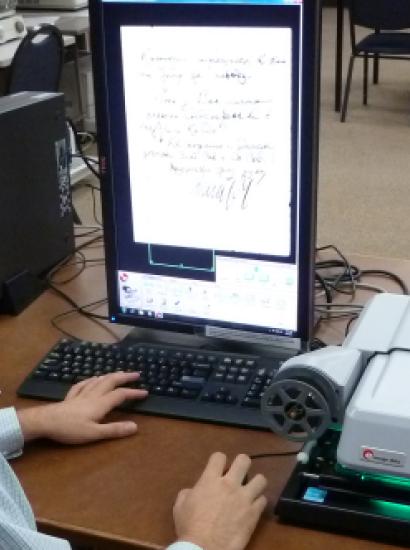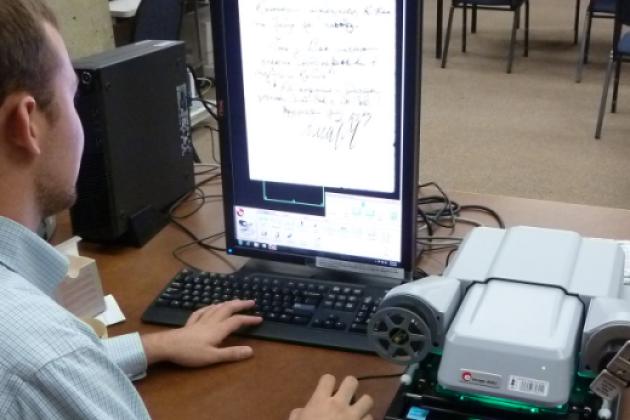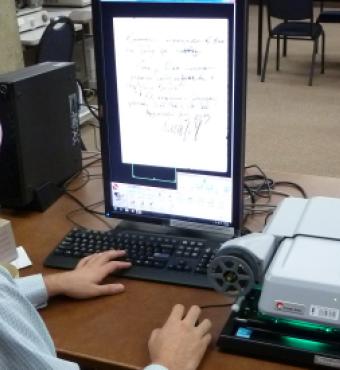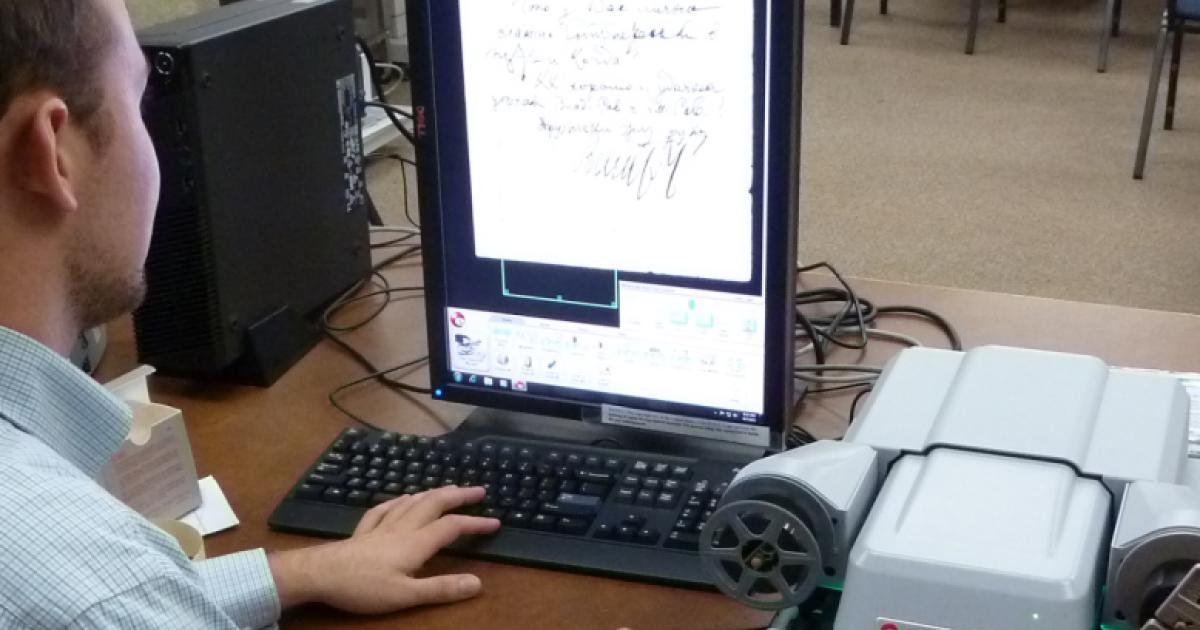
Four computer-based microfilm readers at Hoover make viewing and copying microfilmed materials better and easier. Digital copies made with the new machines can be saved to a travel drive.
Some of the most popular and voluminous collections at the Hoover Archives are in the form of microfilm. These include the Archives of the Soviet Communist Party and Soviet State microfilm (11,676 reels), the Lietuvos SSR Valstybės Saugumo Komitetas [Lithuanian KGB] selected records (1,075 reels), and the Zhongguo guo min dang [Kuomintang] records (1,747 reels). In addition, some of the most used paper-based collections, such as the Boris I. Nicolaevsky collection (817 boxes), have been microfilmed so that the original papers can be withdrawn from use. This protects the originals from the frequent handling that contributes to their deterioration. Although some of this microfilm has been digitized, such as the Central Reform Committee records of the Kuomintang records, microfilm continues to be a significant access format at Hoover.
Thus, the four new digital microfilm readers in the library and archives are a big hit. With the new machines, visitors can view the microfilm on a 24-inch, flat-screen monitor. The focus, zoom, rotate, brightness, and other features can be activated with a mouse click. Page images can be printed to paper or scanned to the researcher's travel drive.
Anyone who has used a computer will quickly feel comfortable with these microfilm readers, as evidenced by the new microfilm workstations being the first to be taken each day by visiting researchers. If you're coming to Hoover to use microfilm, come early and armed with your travel drive!







